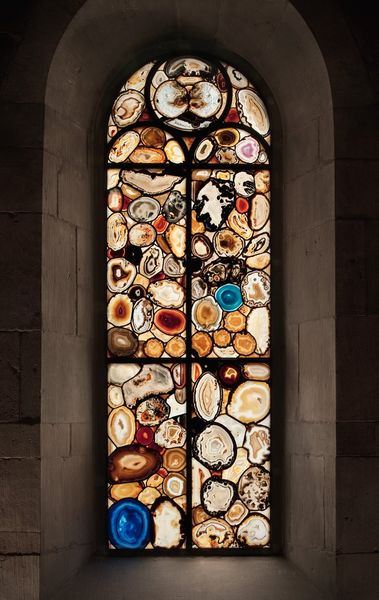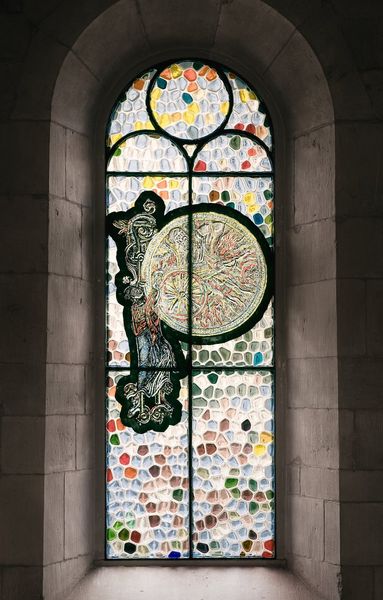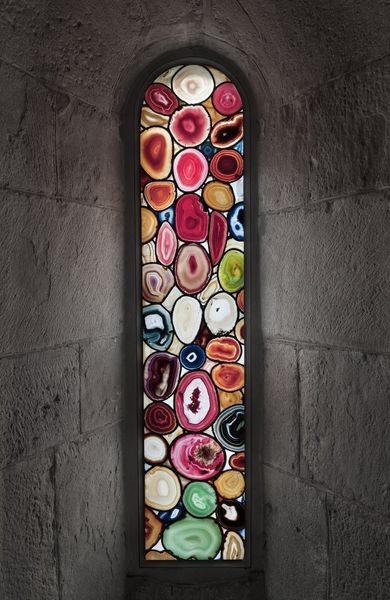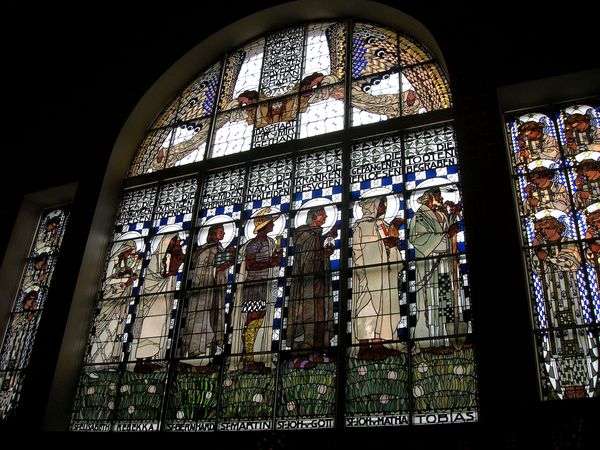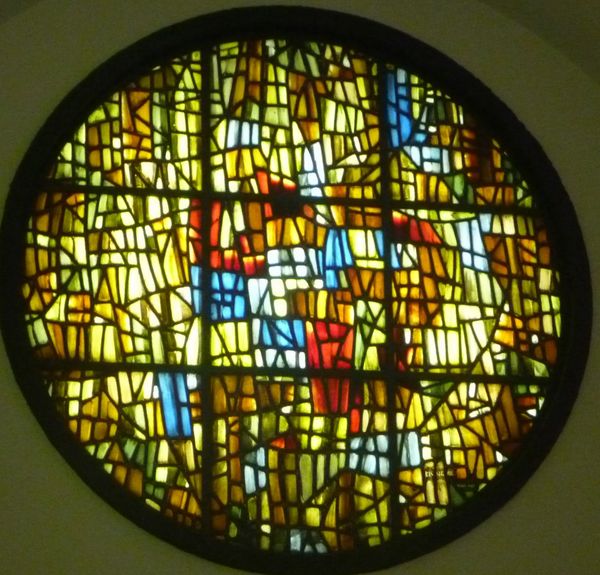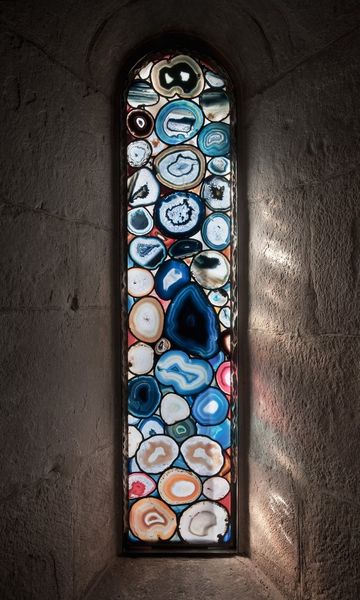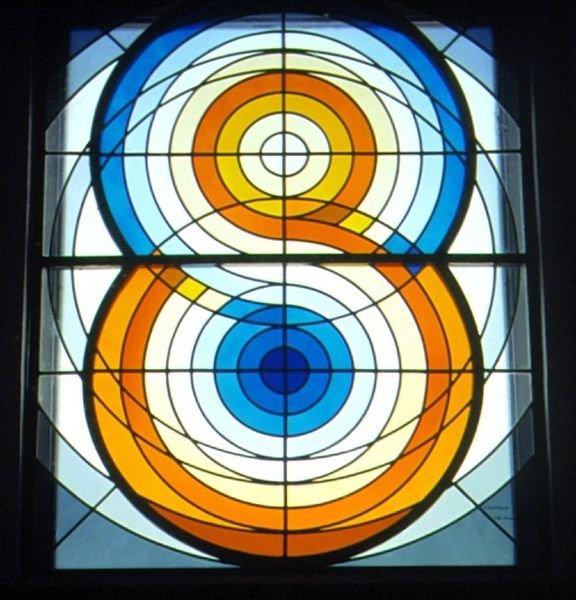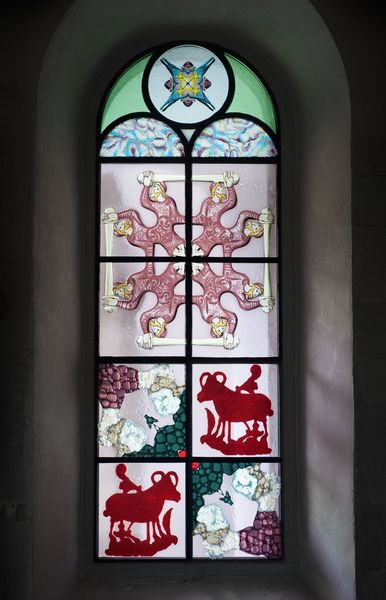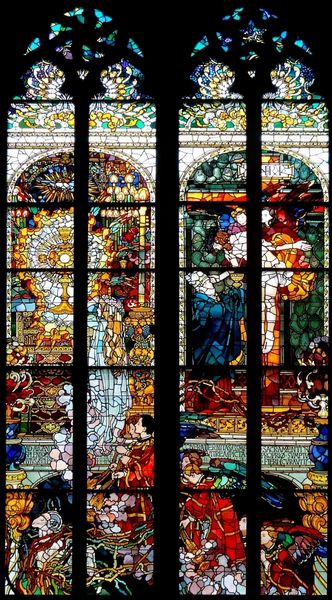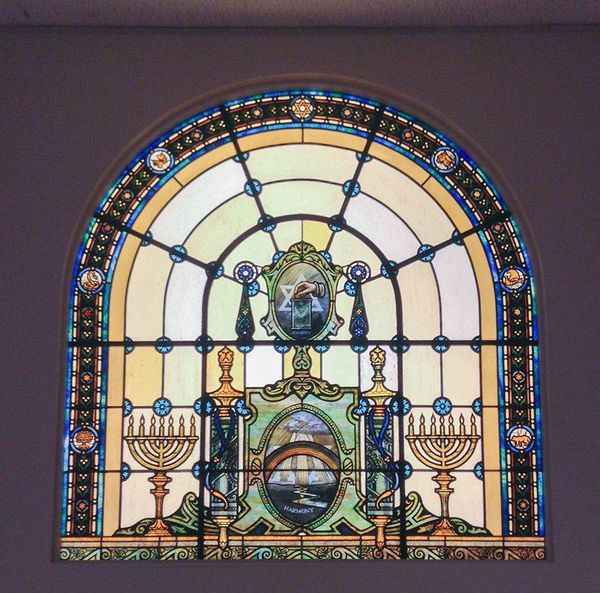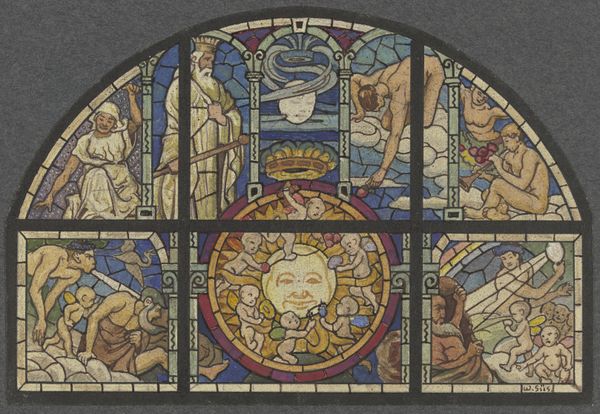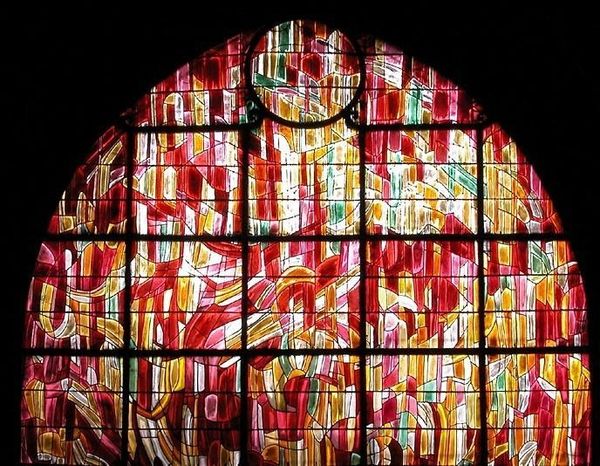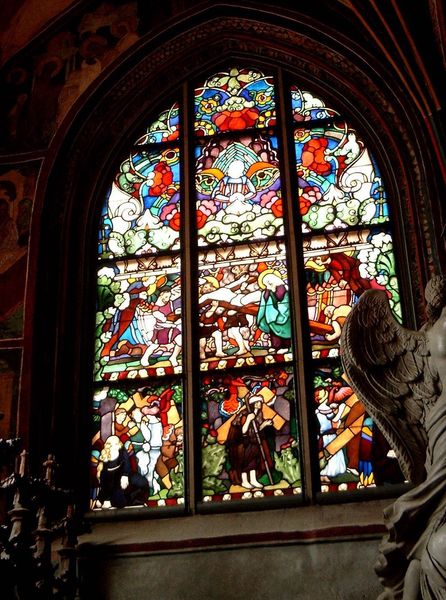
mosaic, glass
#
mosaic
#
contemporary
#
glass
#
capitalist-realism
#
abstraction
#
decorative-art
#
decorative art
Copyright: Sigmar Polke,Fair Use
What happens when we combine medieval techniques with new styles? In 2009, the Grossmünster (a Protestant church in Zurich, Switzerland) launched a commission for seven stained glass windows to adorn their nave (central aisle). Sigmar Polke (1941-2010), a German artist known for his experimental attitude, responded with this! 🪟 Here we see ‘Ahatfenster’, which translates to ‘Agate Window’. Agate is a type of quartz that is formed in bubbles of volcanic rock or lava. Each quartz is completely unique, but all are characterised by their layered bands which create a natural circular pattern. Agate is translucent, meaning light can travel through. ️ Polke utilised this natural translucency to create his windows. He sliced hundreds of semi-precious agate stones into thin layers and set them into glass panels. The artist chose a range of colours, including white, blue, pink, green, red, and orange. Just imagine the vibrant reflections dancing on the floor of the church as rays of sunlight flood in! The Grossmünster was constructed between 1100 and 1220. It’s a great example of medieval Romanesque architecture. The Romanesque style is characterised by semicircle forms, rather than the pointed arches that we see in gothic architecture. By choosing rocks with curved layers, Polke ensured his windows compliment the shape of the building itself. ️ Since ancient times, agate has been associated with healing and strength. This window might look strikingly modern, but it actually represents a convergence of new and old techniques. During the Middle Ages, cut stones were often embedded into windows like we see here! 🪨
Comments
No comments
Be the first to comment and join the conversation on the ultimate creative platform.
